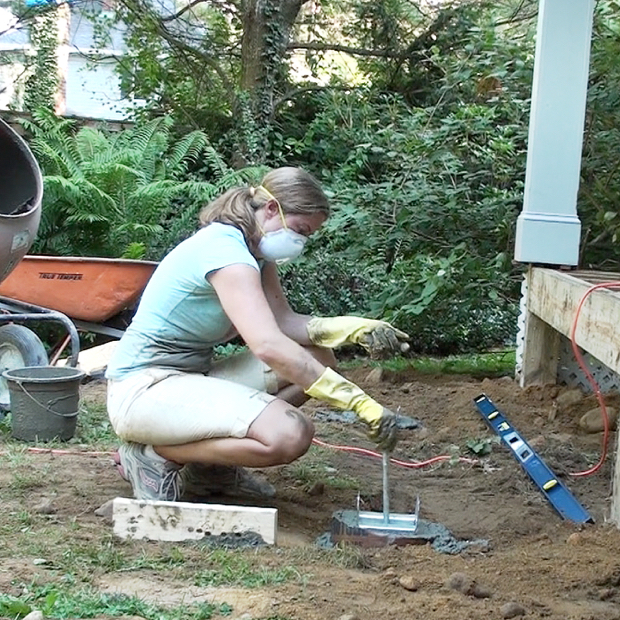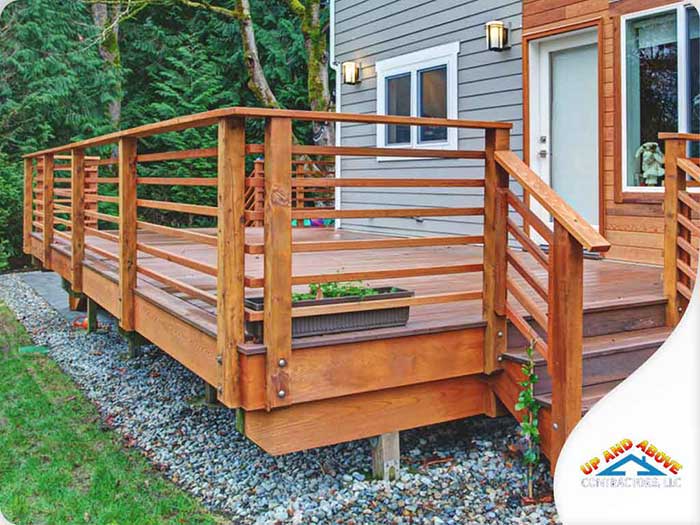Picking the Right Deck Footings for Security and Longevity
When it concerns building a deck, one of one of the most vital decisions you will certainly make is picking the best footings for security and resilience. The long life and safety and security of your deck depend heavily on the kind of grounds you choose, as they supply the essential support and security to withstand the examination of time. With a myriad of alternatives available, it can be overwhelming to identify which footings are best suited for your certain requirements. In this discussion, we will explore the various sorts of deck footings, take into consideration the essential aspects to evaluate when choosing, and look into the pros and cons of different choices. By the end, you will certainly have a clearer understanding of the options at hand and be much better furnished to make a notified choice for your deck project.
Kinds Of Deck Grounds
These footings consist of a round hole loaded with concrete, which gives a solid foundation for the deck articles. Concrete pier grounds are reasonably very easy to set up and supply exceptional stability, making them a preferred option for lots of deck tasks.
These grounds are set up by screwing them right into the ground, which develops a protected structure for the deck. They likewise allow for very easy adjustment and progressing of the deck if required.
Additionally, some contractors choose for precast concrete grounds. These grounds are made of durable concrete and can be found in different forms and dimensions to fit various deck styles. Precast concrete grounds are practical to mount and supply a secure base for the deck framework.
Finally, an additional alternative is the post-in-anchor ground system. This kind of ground includes driving a metal support right into the ground and attaching it to the deck blog post. It uses flexibility in terms of placing the deck articles and appropriates for decks with lightweight frameworks.
When choosing the right sort of deck footing, it is vital to consider elements such as soil conditions, deck load, and regional building ordinance (Deck Footings). Consulting with a professional specialist or architectural engineer can aid make sure the ideal footing is selected for a secure and secure deck
Variables to Think About When Picking Grounds
When choosing the proper footings for a deck, it is essential to meticulously take into consideration different variables such as soil problems, deck tons, and adherence to regional building regulations. These elements play a significant duty in making certain the security and longevity of the deck structure.
Among the primary factors to think about is the soil problems. The sort of dirt on which the deck will certainly be built establishes the sort of grounds required. Decks developed on loose or sandy dirts may call for much deeper grounds to offer sufficient support and protect against settling. On the other hand, decks developed on clay or expansive dirts might need grounds that can accommodate the dirt's propensity to broaden and contract.
An additional vital factor is the deck tons. The weight of the deck, consisting of the materials used and any type of potential real-time tons such as furnishings or celebrations, should be thought about when selecting footings. The grounds need to be developed to bear the weight of the deck and distribute it evenly to prevent any type of architectural concerns or failures.
Finally, adherence to regional building codes is extremely important. Building ordinance differ from region to area, and it is important to adhere to the particular requirements established by the neighborhood authorities. Deck Footings. These codes guarantee that the deck is built safely and fulfills the necessary standards for structural honesty and load-bearing capacity
Concrete Footings: Cons and pros

Concrete footings offer numerous advantages and downsides when made use of as the foundation for a deck. On the silver lining, concrete grounds provide outstanding security and sturdiness. Concrete is a inflexible and strong product that can support hefty tons and hold up against different weather. It also has a long life-span, making it a dependable selection for long-term use.
An additional benefit of concrete footings is their flexibility. They can be poured into various sizes and shapes to fit different deck styles and configurations. Concrete footings can be tailored to fit the details demands and needs of the deck structure.
Nevertheless, there are additionally some disadvantages to using concrete grounds. One major disadvantage is the expense and labor associated with their installment. Concrete footings need excavation and frequently require the assistance of heavy equipment. This can increase the general price of the deck job and may require expert assistance.

Helical Piers Vs. Sonotubes: Which Is Better?
In taking into consideration the structure alternatives for a deck, the contrast in between helical piers and sonotubes is vital in establishing the exceptional option. They are twisted into the ground utilizing hydraulic equipment, providing a secure and resilient structure for the deck.
When it involves security and longevity, helical piers have the top hand. The informative post helical plates on the piers develop a look what i found strong grasp with the soil, protecting against any activity or changing of the deck. This is particularly valuable in locations with unsteady or moving soil problems. Sonotubes, on the other hand, count only on the concrete filling for stability, which may not provide the very same degree of stamina and resistance.
In terms of installation, helical piers are relatively much easier and faster to set up contrasted to sonotubes. The hydraulic equipment made use of to twist the piers into the ground guarantees a quick and effective procedure. Sonotubes, on the various other hand, call for digging holes and putting concrete, which can be labor-intensive and time-consuming.
In addition, helical piers are a more flexible choice. If needed, they can be made use of in different dirt problems and can be changed or enhanced. Sonotubes, on the other hand, may require added assistance, such as rebar, in certain dirt problems or locations with high tons requirements.
Selecting the Right Footings for Your Deck's Measurements
For optimal structural honesty, it is essential to meticulously pick the ideal grounds that straighten with the dimensions of your deck. The measurements of your deck, including its height, width, and length, play a substantial duty in determining the type and size of footings called for.
When choosing footings for your deck, it is very important to think about the load-bearing capacity of the soil. The weight of the deck, integrated with the weight of any furniture or people on it, exerts a substantial pressure on the footings (Deck Footings). It is important to pick grounds that can sufficiently sustain this weight without sinking or moving over time.
The size and shape of the grounds should likewise be taken into consideration. Bigger decks with higher measurements require bigger grounds to supply sufficient stability and assistance. The shape of the grounds, whether they are square or round, depends on the design and design of the deck. In addition, the depth at which the footings are installed ought to be established based upon the frost line in your area to protect against any kind of heaving or shifting due to freezing official statement temperature levels.
Verdict
In final thought, picking the ideal deck grounds is essential for ensuring security and resilience. Variables such as the kind of footings, the deck's measurements, and the pros and cons of different alternatives need to be thought about.
These footings are composed of a cylindrical hole loaded with concrete, which gives a strong structure for the deck blog posts. Concrete pier footings are fairly easy to install and supply exceptional stability, making them a prominent selection for several deck jobs.
Precast concrete footings are convenient to mount and offer a steady base for the deck framework.
It offers versatility in terms of positioning the deck articles and is appropriate for decks with light-weight frameworks.
Concrete footings use several benefits and drawbacks when utilized as the structure for a deck.
Comments on “Engineered for Success: The Scientific Research Behind Durable and Resistant Deck Footings”